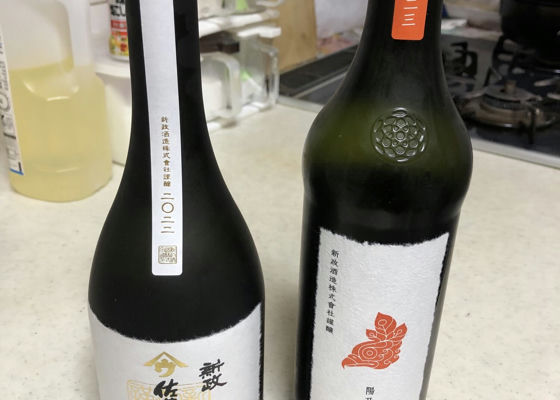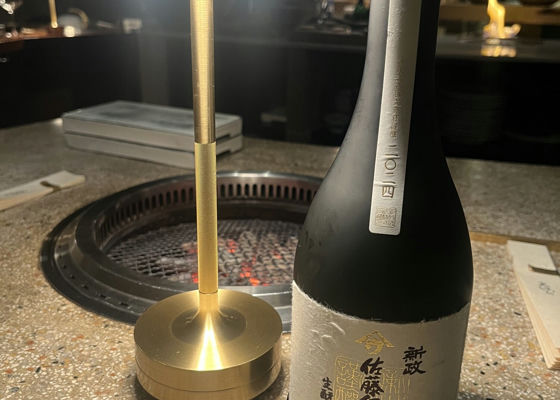
SakenowaRecord your sake experiences and discover your favorites
佐藤卯兵衛Satouhee
Flavor Chart®
A chart created from flavor analysis of user comments.

Flavor Tags ®
Tags generated from flavor analysis of user comments.
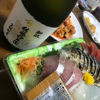
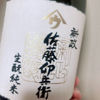
Popular Comments
I'm not sure what to say, but I'm going to say it. I've been drinking it with mackerel tataki, wild yellowtail, squid sashimi, and tuna sashimi.
Japanese>English
It was a gift ✨.
New politics again!
First time for Uhei Sato
It's so delicious ✨.
It's a little fizzy and sweet, just like Shinsei.
It's very easy to drink, but...
You can feel the flavor of the rice well ☺️.
I was going to drink it for my birthday, but I couldn't resist the temptation of Shinsei.
Japanese>English
Similar Brands
We analyze the flavors based on everyone's comments and select similar brands.
IppakusuiseiSimilar Characteristics
Location
6-chōme-2-35 Ōmachi, Akita,Open in Google Maps
Related Articles
新政 No.6 S-type 純米吟醸無濾過生原酒(新政酒造/秋田県秋田市) | 日本酒専門WEBメディア「SAKETIMES」
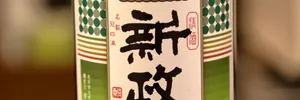 6号酵母のルーツ蔵 日本酒ファンの間では、言わずと知れた「協会6号酵母」(別名・新政酵母)のルーツとなる嘉永5SAKETIMES | 日本酒をもっと知りたくなるWEBメディア
6号酵母のルーツ蔵 日本酒ファンの間では、言わずと知れた「協会6号酵母」(別名・新政酵母)のルーツとなる嘉永5SAKETIMES | 日本酒をもっと知りたくなるWEBメディアEXILE・橘ケンチ&新政酒造・佐藤祐輔の日本酒にかける想い─コラボ日本酒「亜麻猫橘」完成イベントレポート | 日本酒専門WEBメディア「SAKETIMES」
 全国各地の優れた食材やその生産者など、地域の魅力を多くの人たちに知ってもらうプロジェクト「LDH kitcheSAKETIMES | 日本酒をもっと知りたくなるWEBメディア
全国各地の優れた食材やその生産者など、地域の魅力を多くの人たちに知ってもらうプロジェクト「LDH kitcheSAKETIMES | 日本酒をもっと知りたくなるWEBメディア新政酒造に学んだ無添加の酒造り。米、水、米麹、酵母だけの山廃純米酒を造る、群馬県・土田酒造が下した未来への決断 | 日本酒専門WEBメディア「SAKETIMES」
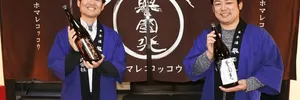 米、水、米麹、酵母。群馬県川場村にある土田酒造は、日本酒を造るのに必要不可欠な4つの要素だけで、山廃仕込みの純SAKETIMES | 日本酒をもっと知りたくなるWEBメディア
米、水、米麹、酵母。群馬県川場村にある土田酒造は、日本酒を造るのに必要不可欠な4つの要素だけで、山廃仕込みの純SAKETIMES | 日本酒をもっと知りたくなるWEBメディアTimeline

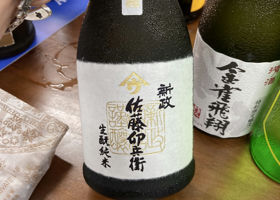
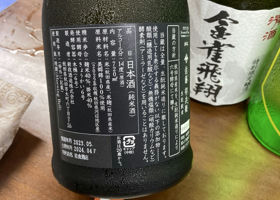
ちょろ
We received a bottle of "Sato Ubei" from Shinmasa Sake Brewery!
It is a very special sake that is rarely seen, and the moment it is poured into a glass, it is already filled with a sense of "preciousness" and "gratitude. It is truly a once-in-a-lifetime experience.
The aroma is elegant and deep, with a sense of transparency that is typical of Shinmasa, while the taste is calm. In the mouth, it has a beautiful taste with both delicacy and depth, and the umami of the rice and lingering aftertaste are superb. It has a somewhat serene and dignified appearance, and is a sake that seems to be the liquid expression of the brewer's thoughts.
It was a miracle to have this bottle, but when I actually tried it, I was even more impressed than it was worth.
It was truly delicious and made me want to savor it as if chewing it slowly for a "special time" 😊.
Japanese>English
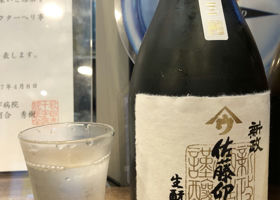
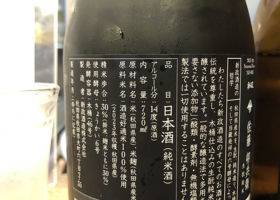
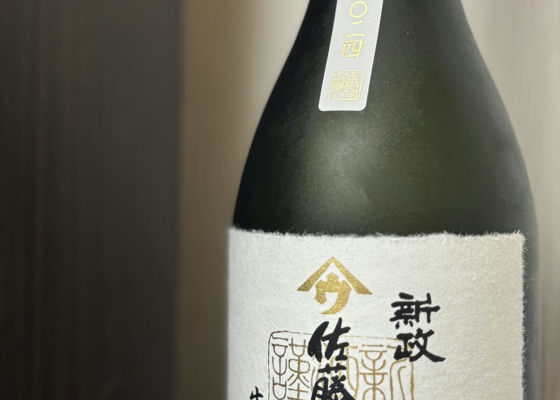
ゆー
Not flashy, discreet acidity. Like a Shine Muscat.
The sweet and sourness stands out on the palate. The spread of the woody and umami flavors combine with the sweetness.
The bitter alcohol taste leaves a little bit of a lingering aftertaste, and the short finish leaves you with a sense of satisfaction.
Japanese>English

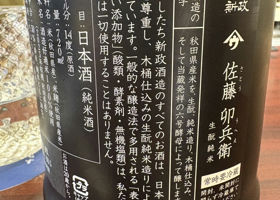

SIMA
秋田2杯目
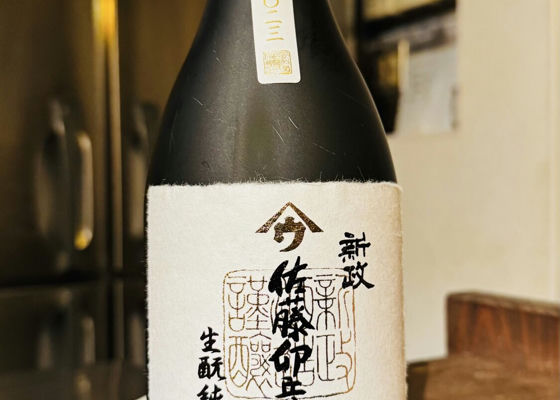


まつちよ
Sato Ubei 🍶 which is only available in Akita prefecture.
I think this is my first time to drink it.
The top aroma is slightly sweet.
The mouthfeel is juicy, sweet, acidic, and full-bodied.
The alcohol content is 14%, which is like sake.
It's very drinkable and delicious 😋.
I like it better than Niimasa 😘lol
Japanese>English
chika
You can drink outside Akita 🤔🍶⁉️⁉️
Japanese>English
まつちよ
Looks like they got it from a liquor store in Akita Prefecture 😆.
Japanese>English
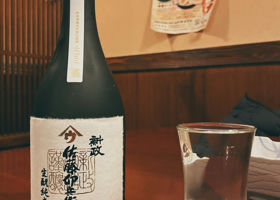

おふじ
Personal preference 3.7/5
Rice: 100% Misato Nishiki
Rice polishing ratio 40
Alcohol content 14
Instead of a hard New Year's flu and telework, I'm here on a trip to Akita: ✈️
I'm playing on such a heavy snow day 😉.
If you get excited when you see snow, you are still a child. ⛄️
So since I came all the way to Akita, I went on a Shinsei parade 🎶.
I know I said I wouldn't ask for it last year, but when I saw they were selling it, I had a sudden urge to drink it...
Sato Ubei is an Akita-only brew, so I've been curious about it for a while!
The taste is the sweetest I've ever had!
I read somewhere that it tastes like white peaches in syrup... and that's exactly what it is.
I had it with seafood, the flounder was delicious 🎶!
Thank you so much for the food 😋!
Japanese>English
ヤスベェ
Good morning, Ofuji 😀.
Sounds like a fun trip to Akita in winter 😀.
Shinsei-san to go with delicious fish and nabe is the best 😇.
But please be careful with the heaviest snowfall this season 🙏.
Japanese>English
ma-ki-
Good morning, Ofuji-san.
It was a hard new year's work, a consolation trip. ⤴️
I'm curious about Akita's limited edition Shinsei ✨.
Seafood is good too 🎵
Take care during your trip and enjoy your sake life 😊.
Japanese>English
ワカ太
Good morning, Ofuji 😃Kakunodate was it? I love the castle town, the snow, and the delicious local sake and snacks😍That's great to say the least 😆👍Take care of yourself a lot💕.
Japanese>English
おふじ
Hi Yasbay, ☀️
I think winter is the best time to travel to Tohoku ⛄️
I can't thank you enough for the flights 🙏.
It's snowing like crazy, but I'll be careful and do some sightseeing!
Japanese>English
おふじ
ma-ki- Hi ☀️
Yes, this is a comfort trip in anticipation of this 😏.
I don't think I'll be able to get as much as I'd like, but I'm enjoying it for what it is: ✌️
After this, I will also enjoy sake activities and hot springs ♨️
Japanese>English
おふじ
Hello Wakata, ☀️
This is Kakunodate! I've wanted to go there for a long time. ✨️
It was nice to feel the history 😊The snow makes it hard to walk, but it's great!
I will continue to post about yesterday's Shinsei 🎶.
Japanese>English
コタロー
Hi Ofuji-san, ☀️
Shinsei on your trip to Akita, what a wonderful holiday 🥳.
I went to Kakunodate in the snow a few years ago myself, the atmosphere is amazing ✨.
Looking forward to continuing the onsen and sake activities after this 😆.
Japanese>English
T.KISO
Hi Ofuji😊.
Welcome to Akita 🤗❣️
The snowy view of Kakunodate is different from the cherry blossom view and I like it too 😁.
It's cold 🥶 so please be careful 😉.
Japanese>English
おふじ
Good evening, Mr. Kotaro 🌛.
I came here because JAL is cheaper this time of year: ✈️
It was so beautiful and fun, I think it's great during cherry blossom season too😊.
And I'm enjoying the sake activities in Akita ᾶ.
Japanese>English
おふじ
T.KISO Good evening 🌛.
I will be visiting Akita: 🙇♂️
I wanted to visit Kakunodate, I like winter scenery, so I was satisfied.
It was the strongest cold wave and there were few people, so it looked good from a photographic point of view. ✌️ I'll buy some sake other than Shinsei and go back home 🎶.
Japanese>English
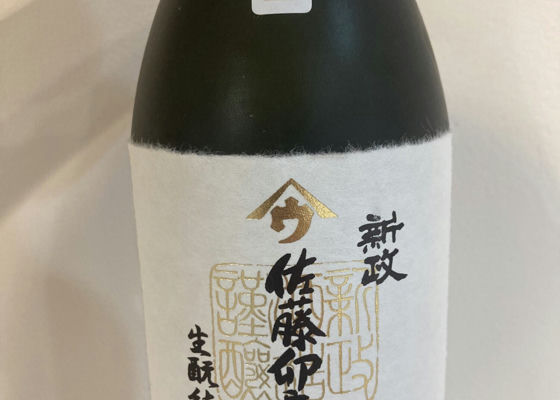
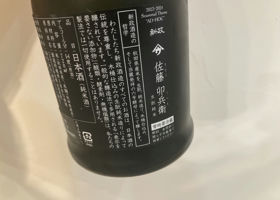
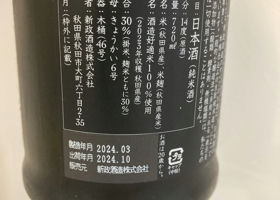
ぱんだらす
This is Sato Ubei, a limited edition Akita sake from Shinmasa.
One sip and it tastes like clean, natural water, unlike any other Shinmasa I have ever tasted.
The more you drink it, the more delicious it becomes.
Ingredients: Produced in Akita Prefecture
Alcohol content: 14%.
Rice polishing ratio: 30%.
Yeast: Kyokai No. 6
Japanese>English
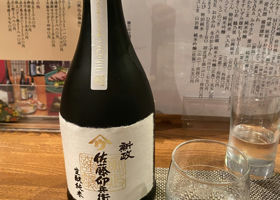
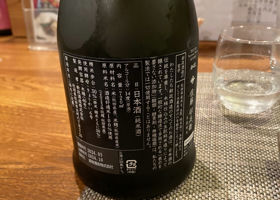
べっさん
Second drink. Recommended by a friend. The three of us decided to share a sip. Ah, it's Niimasa. It's elegant and tasty with a hint of acidity. We are happy.
Japanese>English
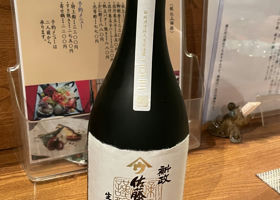
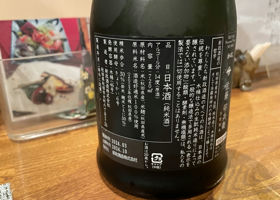
メキシコテキーラ
The second cup is a gem of Akita Shinmasa. Even though it is not a ginjo, the aroma and taste are quite good. Delicious.
Japanese>English
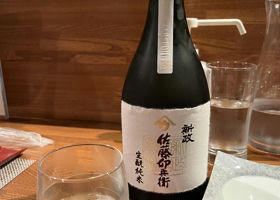
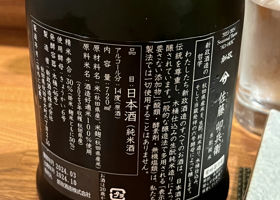
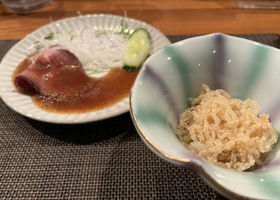

しんしんSY
Mowing on this day
The fairways were wide on the OUT course, and we were told that it was a course in the northern part of Japan.
All three of us were able to shoot good scores and everyone was happy!
Then let's have a good drink!
Two of us had never had a drink before.
It's a bit expensive and you don't often come across this kind of sake.
The three of us shared a half-bottle of sake and tasted it.
The sake has a characteristic acidity because it is a sake yeast yeast yeast yeast yeast yeast yeast yeast yeast yeast yeast.
But why is it so beautifully finished?
Now, everyone asked the owner for their favorite sake!
the secrets of the brewer's art
Alcohol 14 degrees
Polishing ratio 30%.
Rice used: Sake brewing rice (2023nen from Akita Prefecture)
Yeast used: Kyokai No. 6
Japanese>English



🍀クロ🍀
★★★★⭐︎
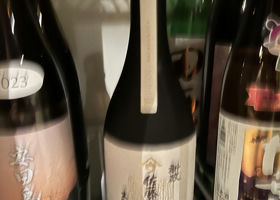
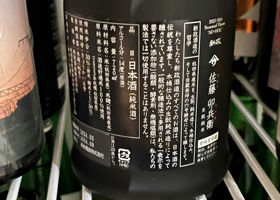
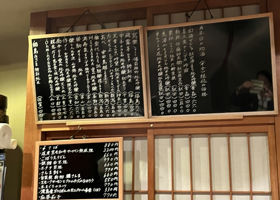
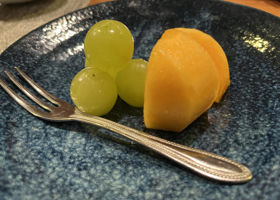
しんしんSY
To remember and record
extensive knowledge
Alcohol 14% (original sake)
Rice polishing ratio 30%.
Yeast used: Kyokai No. 6
Japanese>English
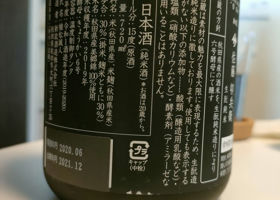
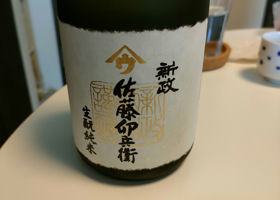
たまごそぼろ
It was delicious~!
This is a fig and ham salad
(Raspberry sauce)
It went perfectly with the raspberry sauce!
Japanese>English
Satouhee生酛純米 美号錦
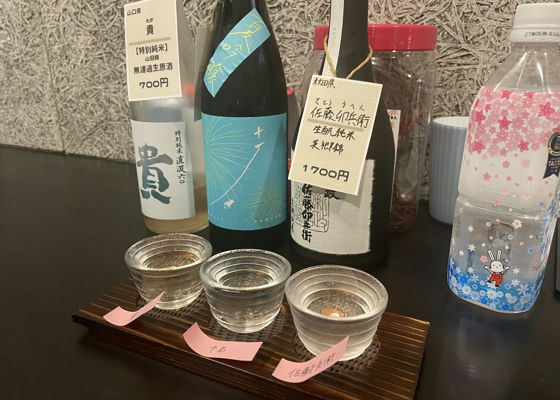
もっきー
Degree of alcohol content: 14
Rice polishing ratio: 40% for koji rice, 40% for kake rice
The smell of rice is amazing to the nose, it is sparkling and too easy to drink!
Japanese>English
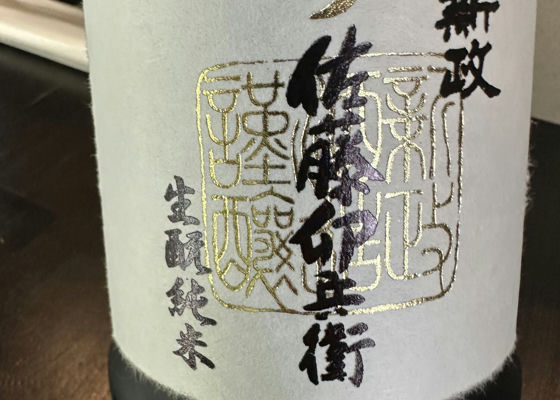
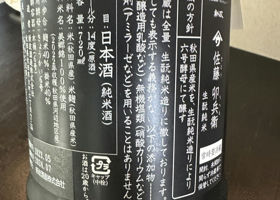
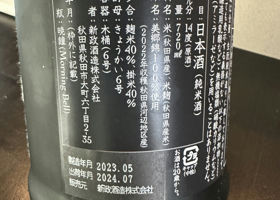
massa
Since the end of June, I have been working without a weekend off due to horse racing, so last Saturday evening I made a reservation at a restaurant I had checked out on Instagram for a one-person drink to replenish my energy for the final day of the race on July 21.
The first sake I started with was "Sato Ubei," and I opened the unopened bottle on the spot.
The first sake was "Sato Ubei," and I opened it right then and there.
I think I prefer it to No.6.
It was a good decision to drink it first.
But the owner is out of his mind to offer all-you-can-drink 😅.
I drank 2 cups of sake, thinking that it is better to share good sake.
The first drink that got me excited.
Japanese>English
さとー
Good evening, massa 🌆.
This restaurant is too luxurious to drink 2 cups of Sato Ubei 😂.
I'm too jealous😭
Japanese>English
massa
Satou-san Good evening.
It was really extravagant.
I appreciate the spirit of the owner.
Japanese>English
